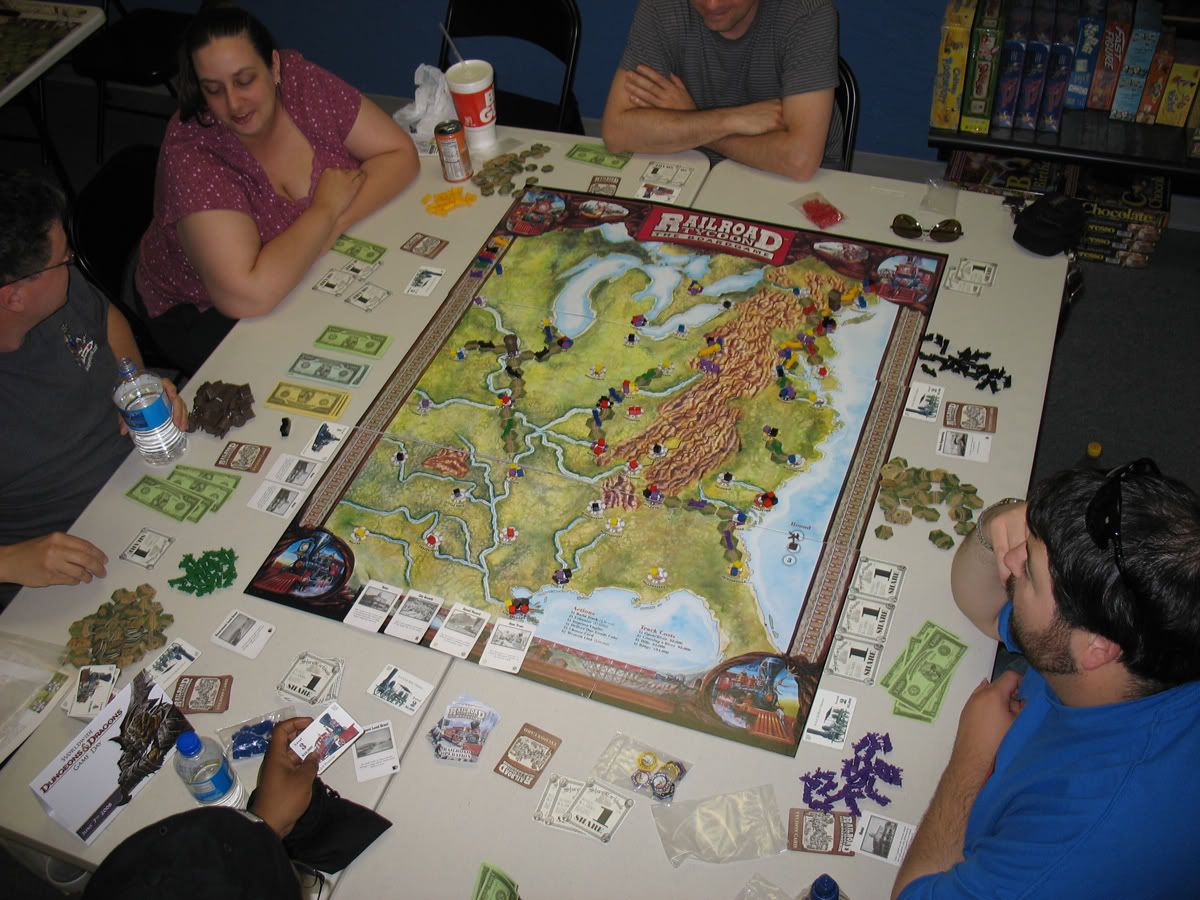I imagine that most board gamers are like me and played with a lot of toys when they were kids. At some point, most of us give up playing with bits of plastic and move on to more intelligent pursuits. Some of us, still hold on to toys and while we don't play with them anymore we keep them around. They have their place on our desks and mantles, and we imagine their exploits and battles in our heads. This is why games like Warhammer, Twilight Imperium, and Battletech are so cool. They fire up our imaginations as we play out the battles in our minds, with minatures and terrain helping us play.
Cleopatra and the Society of Architects offers a similar kind of stimulation. The game has a lot of essential plastic bits and even the game's box is a part of the set up. In the game, the players take on the role of architects building a palace for the eponymous Egyptian queen. In order to complete the various parts of the building, such as the garden mosaics, throne, honorary obilisks, and sphinxes. As more elements of the palace are completed, Cleopatra approaches the front doors. Once she reaches the doors, the game ends and a winner is determined by the number of point accumulated by complete parts of the palace.

There's a catch though, and this part truly makes the game stand out. Since all the players are competing for the attention of the great Cleopatra, there are shortcuts the players can take to complete their projects before their rivals. Shady workers and specialists and ill-gotten goods speed up the completion of the palace, but at the cost of corruption at the hands of the crocodile-god Sobek. At the end of the game, the player with the most corruption loses. No reprieves, no appeals. The player with the most corruption comes in last place. Everyone else is judged on the points they've recieved over the course of the game.
Cleopatra is mechanically similar to other building games like Ticket to Ride in that every turn you must choose whether to gather resources or build. The key differnce here are the pieces, which are awesome. Some players have even taken to adding custom paintjobs to their bits. For this, the 1 hour or so play time, and the rather nasty-but-fun corruption mechanic, Cleopatra and the Society of Architects get a 7/10 VP. I'd say the only bad thing about game is putting it away, which can be somewhat of a hassle, BECAUSE OF ALL THE AWESOME PIECES. :D
Cleopatra and the Society of Architects offers a similar kind of stimulation. The game has a lot of essential plastic bits and even the game's box is a part of the set up. In the game, the players take on the role of architects building a palace for the eponymous Egyptian queen. In order to complete the various parts of the building, such as the garden mosaics, throne, honorary obilisks, and sphinxes. As more elements of the palace are completed, Cleopatra approaches the front doors. Once she reaches the doors, the game ends and a winner is determined by the number of point accumulated by complete parts of the palace.

There's a catch though, and this part truly makes the game stand out. Since all the players are competing for the attention of the great Cleopatra, there are shortcuts the players can take to complete their projects before their rivals. Shady workers and specialists and ill-gotten goods speed up the completion of the palace, but at the cost of corruption at the hands of the crocodile-god Sobek. At the end of the game, the player with the most corruption loses. No reprieves, no appeals. The player with the most corruption comes in last place. Everyone else is judged on the points they've recieved over the course of the game.
Cleopatra is mechanically similar to other building games like Ticket to Ride in that every turn you must choose whether to gather resources or build. The key differnce here are the pieces, which are awesome. Some players have even taken to adding custom paintjobs to their bits. For this, the 1 hour or so play time, and the rather nasty-but-fun corruption mechanic, Cleopatra and the Society of Architects get a 7/10 VP. I'd say the only bad thing about game is putting it away, which can be somewhat of a hassle, BECAUSE OF ALL THE AWESOME PIECES. :D






